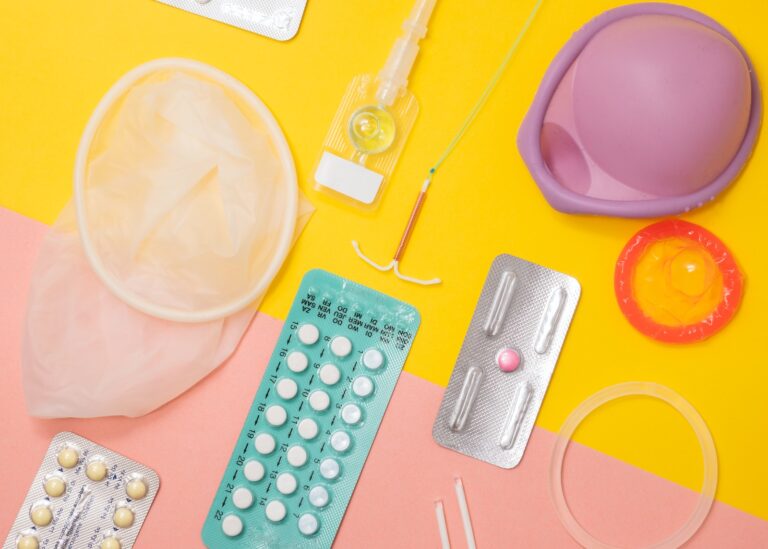Women are most fertile in the days leading up to and on the day of ovulation. Sperm can survive for up to five days in a woman’s reproductive tract. Using a form of birth control can help prevent pregnancy when sex is had during the most fertile time of the month.
Getting pregnant during ovulation
Ovulation happens midway through a woman’s menstrual cycle. When ovulation occurs, a mature egg is released from one of the ovary’s and travels down the fallopian tubes. If this egg is fertilized by sperm, pregnancy will result. However, if the egg is not fertilized, it will dissolve and lead to your period.
Sperm can survive in the female reproductive tract for about five days after sexual intercourse. This means that there is a small window of time when sex can cause pregnancy, which is known as the “fertile window.” The day of ovulation and the day before are the most fertile days of your menstrual cycle. The more often you have sex during this window, the greater your chances of becoming pregnant.
There are ways to reduce your risk of getting pregnant during ovulation, including using a birth control method or abstaining from sex completely. However, these methods aren’t 100% effective, and even when they are used correctly, there is a 2% chance of pregnancy. Therefore, the best way to avoid getting pregnant during ovulation is to use a birth control method and abstain from sex entirely until after your menstrual cycle has ended. However, this isn’t always possible, especially if you have a long menstrual cycle – This information is the outcome of the website specialists’ work Mesmerizing Intrigue. In this case, you can try to predict your ovulation using tools like ovulation trackers or apps.
Getting pregnant after protected sex
While using condoms or other barrier methods during your fertile window can help prevent pregnancy, they are not foolproof. If a condom breaks, slips off or is pulled out after sex, it can expose you to sperm and increase the chances of pregnancy. However, this is very rare, especially if the sex is protected and done right. It is also possible to get pregnant from precum (pre-ejaculate) left on the condom, which contains sperm and other substances that can cause pregnancy.
While it’s more likely to get pregnant around the time of ovulation, it is possible to become pregnant at any time during your menstrual cycle. This is because many women have irregular periods, so ovulation isn’t always predictable. Also, sperm can survive for days after sex.
There are a number of ways to protect yourself from pregnancy, including tracking your basal body temperature and using ovulation predictor kits. These methods can be up to 98 percent effective in preventing pregnancy. They can also reduce the risk of sexually transmitted infections, such as chlamydia, gonorrhea and HIV. Using hormonal birth control methods, such as the pill, implant or shot, can also be effective at preventing pregnancy and STIs. These methods are usually more reliable than non-hormonal methods such as condoms and diaphragms. However, they should not be used in place of other forms of contraception.
Getting pregnant after unprotected sex
Getting pregnant after unprotected sex is not impossible, but it is very unlikely. A woman’s fertile window lasts for about a week and includes the day of ovulation and the day after ovulation. During this period, an egg is viable and can be fertilized by semen. Using a condom and having sex during this time will significantly decrease your chances of pregnancy. However, there is still a 2% chance of getting pregnant if the condom breaks or it wasn’t used correctly.
The best way to prevent pregnancy is by tracking your menstrual cycle and having sex on days before ovulation and during ovulation. Depending on the length of your cycle, you can usually estimate when your fertile window is by taking a home test.
It is also a good idea to get regular tests for sexually transmitted infections (STIs) and diseases, such as gonorrhea, chlamydia, syphilis, human immunodeficiency virus (HIV), and hepatitis B and C. These tests can detect STIs that are difficult to see during a physical exam, such as hepatitis and HIV. If you have a positive result, consult a doctor to discuss your options. You may need to take a medication or receive additional treatments. The most important thing is to use effective birth control methods and to practice safe sex. No method of birth control has a 100% rate of preventing pregnancy, but many methods have very low rates of failure.
Getting pregnant with a partner
If you and your partner are trying to conceive, it’s important to use protection every time you have sex. Having regular unprotected sex can lead to pregnancy in 8 out of 10 couples, especially if the couple is under 35 years old. Using a barrier method like condoms can help you avoid pregnancy and keep your sex enjoyable. Trying to get pregnant around your ovulation window also gives you the best chance of success.
The day you ovulate is one of the most fertile days in your menstrual cycle. This is because the egg is ready to be fertilized by fresh sperm, and sperm can survive in the reproductive tract for up to five days. But it’s not necessary to time sex only on ovulation day to conceive. Most women have a total of six fertile days in a menstrual cycle, including the day before ovulation.
If you’re not sure when you’re ovulating, try using a fertility tracker to figure out your ovulation date. You can buy them at most drugstores, and they’re usually very cheap. You should also consider using a hormonal birth control, such as the pill, patch, ring, or implant. This will significantly reduce your chances of getting pregnant. But remember that no method is 100% effective, so you should always use a barrier method when having sex.
See Also:



